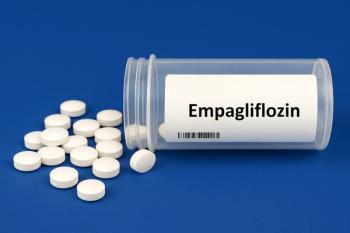
How Pharmacists Can Help Patients with GERD
With their knowledge and experience, pharmacists can be quite helpful to patients with GERD.
What is GERD?
Gastroesophageal reflux disease (GERD) occurs when stomach acid flows through the esophagus to the mouth. Patients with GERD may experience a variety of symptoms, including:
- Heartburn (often worse after eating)
- Difficulty swallowing
- Indigestion
- A “sour taste”
- The feeling of food stuck in the throat1
How common is GERD?
Having occasional reflux symptoms is common, but reflux that occurs more than twice a week for several weeks may be GERD.
GERD affects approximately 20% of adults in the United States.2
Patients are more likely to develop GERD if they are over age 40, overweight or obese, pregnant, a smoker, or taking certain medications, which include:1,2,3
- Asthma medications (prednisone, albuterol, and other bronchodilators)
- Calcium channel blockers
- Antihistamines
- Pain medications
- Sedatives
- Antidepressants
Lifestyle changes
Pharmacists can counsel patients on lifestyle changes that may help GERD symptoms:4,5,8
- Keep a food diary. Limit trigger foods and beverages such as chocolate, fried food, peppermint, spicy foods, pizza, processed foods, fatty meats or cheese, tomato-based sauces, citrus fruits, chocolate, coffee, and carbonated beverages.
- Sit up straight while eating. Eat smaller, more frequent meals instead of a few large meals. Do not lay down for at least 2 to 3 hours after a meal or an acidic or caffeinated beverage.
- Elevate the head while sleeping. Raise the head of the bed 6 to 8 inches by safely putting blocks under the bedposts. Patients can use extra pillows in addition to this.
- Wear loose-fitting clothing to limit pressure on the stomach.
- Stop smoking and avoid secondhand smoke.
- Lose weight.
What OTC products are available?6
Antacids
Antacids work by neutralizing stomach acid.
Examples include Tums, Mylanta, and Rolaids.
H2 receptor antagonists (H2 blockers)
H2 blockers compete with histamine for H2 receptors in the stomach, decreasing acid production.
OTC H2 blockers include cimetidine (Tagamet HB), famotidine (Pepcid AC), and famotidine/antacid (Pepcid Complete).6
In April 2020, the FDA requested removal of all ranitidine (Zantac) products, both OTC and prescription, due to contamination with N-Nitrosodimethylamine (NDMA).7
Proton pump inhibitors (PPIs)
PPIs work by preventing or reducing heartburn.
OTC PPIs include OTC esomeprazole Nexium 24 HR, OTC lansoprazole (Prevacid 24 HR), OTC omeprazole (Prilosec), and OTC omeprazole/sodium bicarbonate (Zegerid).
OTC PPIs should only be used for 2 weeks at a time.
What prescription products are available?8
H2 receptor antagonists (H2 blockers)
- Cimetidine
- Famotidine
PPIs
- Rabeprazole (Aciphex)
- Dexlansoprazole (Dexilant)
- Esomeprazole (Nexium)
- Lansoprazole (Prevacid)
- Omeprazole (Prilosec)
- Pantoprazole (Protonix)
- Omeprazole/sodium bicarbonate (Zegerid)
Prokinetics
- Bethanechol (Urecholine)
- Metoclopramide (Reglan)
Counseling points for H2 receptor antagonists
The most common adverse effects (AEs) of H2 blockers include diarrhea, constipation, fatigue, drowsiness, headache, and muscle aches.9
Rare instances of liver injury may occur.9
H2 antagonists may be associated with rare CNS AEs such as delirium, confusion, hallucinations, or slurred speech. These AEs are more common in patients with renal or hepatic impairment or patients over 50 years old.10
Cimetidine is a potent CYP450 inhibitor and has many drug interactions. Cimetidine inhibits the metabolism ofwarfarin, phenytoin, propranolol, nifedipine, chlordiazepoxide, diazepam, certain tricyclic antidepressants, lidocaine, theophylline, and metronidazole.11 Patients should consult their health care provider to ensure no drug interactions are present before taking cimetidine.
Counseling points for PPIs
PPIs’ most common AEs include diarrhea, headache, nausea, constipation, flatulence, and abdominal pain.12,14
Response to therapy does not rule out a gastric malignancy. Patients should consult their health care provider about the need for additional testing.12,14
Patients should be on the lowest dose of a PPI for the shortest amount of time.12,14
PPIs have been associated with Clostridium difficile diarrhea, especially in hospitalized patients.12,14
PPIs may be associated with an increased risk of bone fractures (of the hip, wrist, or spine). The risk increases with higher doses or duration of treatment over 1 year.12,14
Daily long-term PPI treatment (more than 3 years) can cause B12 deficiency.12,14
Related:
Low magnesium levels may occur, usually after 1 year of PPI treatment. Symptoms may include muscle cramps, arrhythmia, and seizures.12,14
Daily treatment with a PPI for more than 1 year is associated with an increased risk of fundic gland polyps.12,14
Acute interstitial nephritis may occur at any point in therapy, usually due to a hypersensitivity reaction.12,14 Symptoms include fever, blood in the urine, change in urine output, mental status changes, nausea, vomiting, rash, swelling, and weight gain.13
Cutaneous lupus erythematosus and systemic lupus erythematosus have been reported in patients taking PPIs.12,14
When should patients see a gastroenterologist?
Patients who experience frequent or severe symptoms (projectile vomiting; vomiting large amounts; breathing problems; pain; or bloody, green, or coffee-ground vomit) should consult a gastroenterologist for treatment and testing.2
How can pharmacists help?
With their knowledge and experience, pharmacists can be quite helpful to patients with GERD. Pharmacists can review the patient’s medication list and identify any drugs that may be contributing to GERD symptoms. Pharmacists can also recommend appropriate OTC medications or counsel on prescription drugs, encourage lifestyle changes, and refer patients to a gastroenterologist if needed.
References
1. GERD (Chronic Acid Reflux) Cleveland Clinic.
2. Symptoms & Causes of GER and GERD. National Institute of Diabetes and Digestive and Kidney Diseases.
3. Asthma and Gastroesophageal Reflux Disease. Asthma and Allergy Foundation of America.
4. GERD Diet: Foods that help with Acid Reflux. Johns Hopkins Medicine.
5. Lifestyle changes for Gastroesophageal Reflux Disease. NYU Langone Health.
6. Over-the-Counter (OTC) Heartburn Treatment. United States Food and Drug Administration.
7. FDA Requests Removal of All Ranitidine Products (Zantac) from the Market. United States Food and Drug Administration.
8. Treatment for GER and GERD. National Institute of Diabetes and Digestive and Kidney Diseases.
8. LiverTox: Clinical and Research Information on Drug-Induced Liver Injury [Internet]. Bethesda (MD): National Institute of Diabetes and Digestive and Kidney Diseases; 2012-. Histamine Type-2 Receptor Antagonists (H2 Blockers) [Updated 2018 Jan 25]. Available from:
9. Nugent CC, Falkson SR, Terrell JM. H2 Blockers. [Updated 2020 Mar 25]. In: StatPearls [Internet]. Treasure Island (FL): StatPearls Publishing; 2020 Jan-. Available from:
10. Cimetidine. DailyMed.
11. Lansoprazole. DailyMed.
12. Interstitial nephritis. Medline Plus. US National Library of Medicine.
13. Omeprazole. DailyMed.
Newsletter
Pharmacy practice is always changing. Stay ahead of the curve with the Drug Topics newsletter and get the latest drug information, industry trends, and patient care tips.





















































































































































